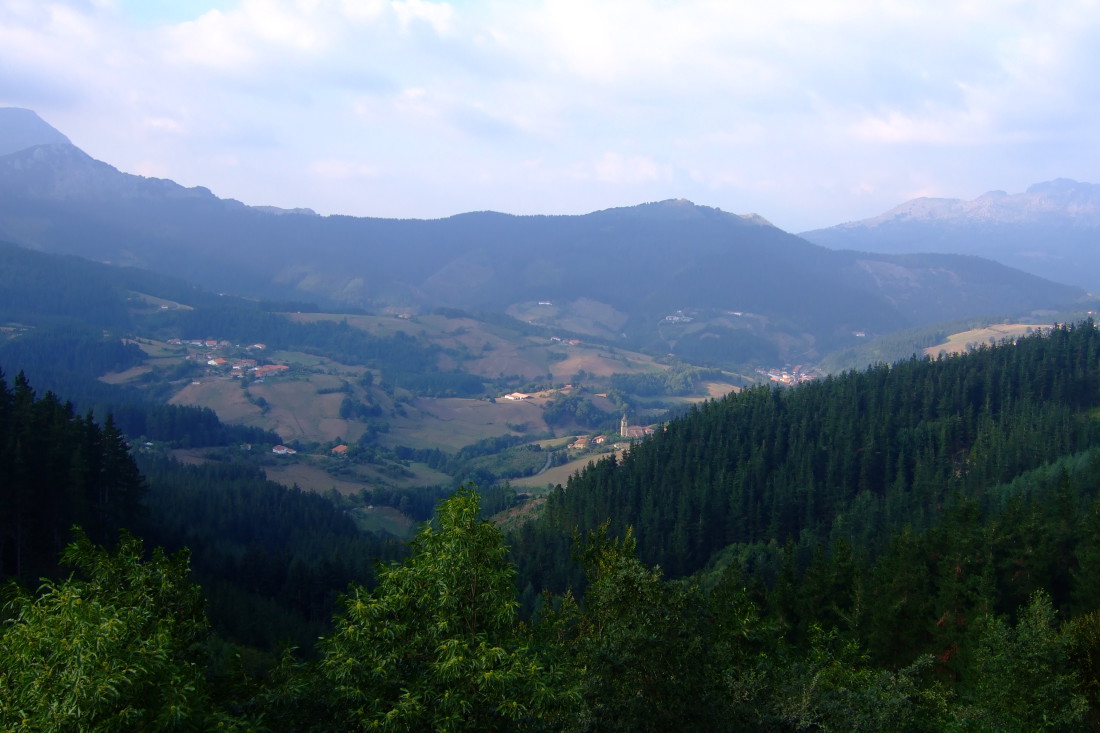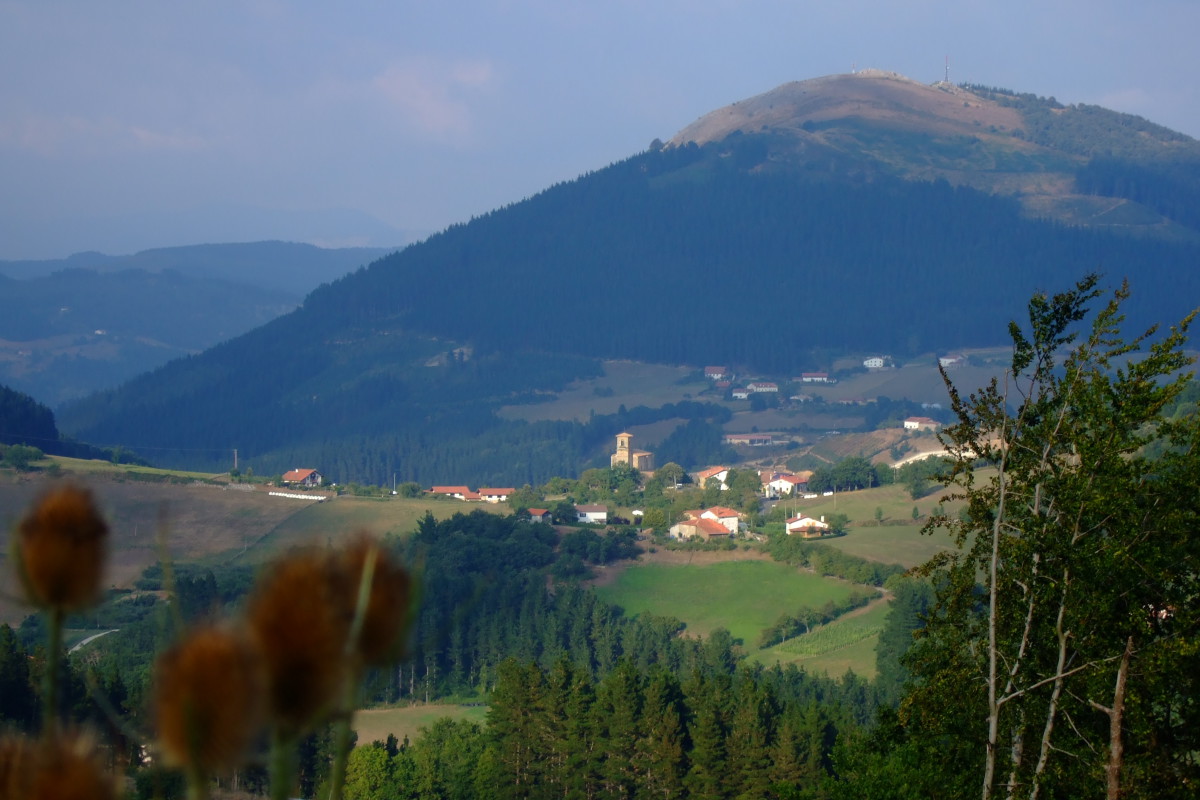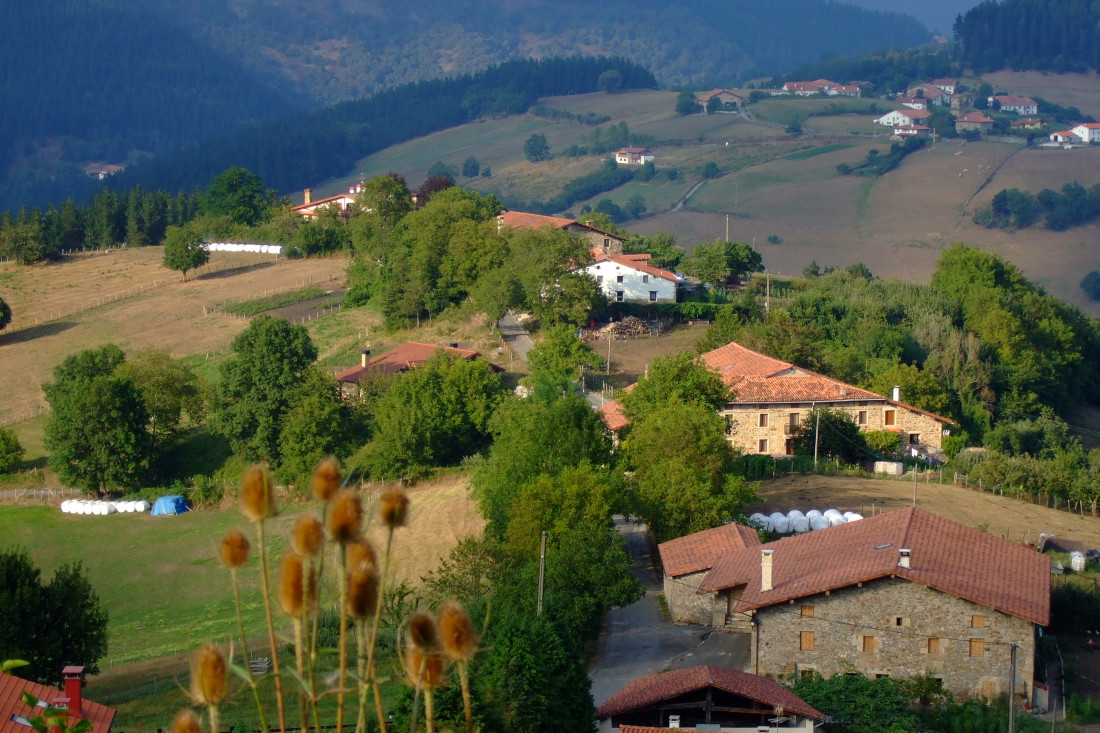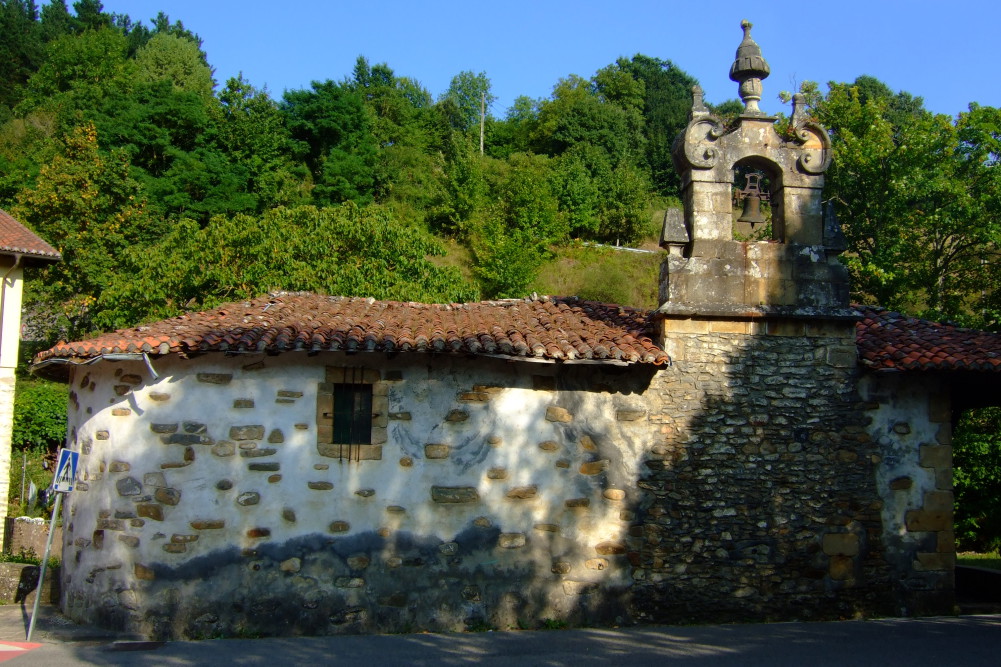Los días buenos de moto duran poco en estas tierras del norte y hay que aprovechar lo que queda de verano. Aun así, conviene elegir con criterio el rumbo, para sacar el mejor partido posible a la meteorología; de modo que miro la predicción del tiempo, sobre todo el viento, y según esto marco mi derrota para hoy en el mapa.
En estas salidas cortas prefiero, mientras el clima me lo permita, usar un casco jet. Ya sé que protege menos, pero… ¡me da tanta libertad!
Los primeros quilómetros, de autovía, me vienen bien para ir entrando en calor: tanto Rosaura como yo. Luego cojo una carretera de segundo o tercer orden que no tiene indicación alguna, aunque por suerte está bien asfaltada. Empieza lo interesante. Al principio voy ganando altitud por unas lomas con fuertes cambios de rasante, flanqueadas por el azul de un pantano a mi izquierda y por el verde del bosque a mi derecha. Según voy ascendiendo, la vista hacia el agua se va haciendo paisaje. Después, la carretera se adentra más en la fronda y, durante un rato, discurre bajo una cúpula de umbríos hayedos, centenarios robledales y tupidos pinares, parcheados de cuando en cuando por algún pequeño prado. En este terreno las curvas son impredecibles y los animales más aún, así que no hay que confiarse; aprovecho para disfrutar de la silva, que parece querer trasladarme a un tiempo puro y lejano.
Inesperadamente, a la vuelta de un recodo, el bosque se abre de repente y aparece ante mí un paisaje que me golpea con su belleza en el espíritu, obligándome a frenar en seco para contemplarlo. Es Aramayo, un valle asombroso e idílico; una de esas nostálgicas Arcadias de la montaña alavesa, hecha de verdes y vibrantes prados, dorados rastrojos, oscuras florestas, perdidos y humeantes caseríos, y rodeada por azuladas montañas. Abajo, en el fondo, se ven varias aldeas y, semioculto por una colina, asoma el municipio de Ibarra.
Después del collado, a medida que desciendo hacia el valle por la empinada y serpenteante carretera, Aramayo va embrujándome más y más. En este rincón del planeta aún huele a tierra húmeda y a vaca lechera, a heno y a boñiga, al campo de una era armónica y preindustrial. Es un lugar cautivador. Por la sola fuerza de su pureza, cuesta creer que fuese la cuna del sanguinario Lope de Aguirre, como algún articulista reclama para este valle; dudoso honor.
En cuanto entro a Ibarra, me siento observado con cierta desconfianza. Tal vez porque estoy en uno de los baluartes del euskaldunismo -inkurriñas y etxeras- donde cada forastero puede ser un enemigo; o tal vez es sólo mi sugestión. Dejo la moto bien aparcada y, como es mi costumbre, me adentro por las callejas del pueblo en busca de rincones pictóricos. Al verme pasar un par de veces, un vecino me interpela en vascuence, con tono de interrogación. Le señalo mi cámara y le digo: “turismo”. Me pregunta entonces en español: “¿Turismo interior o exterior?”. No sé qué habrá querido decir. “Simplemente turismo”, le contesto.
En la ribera del río Aramayo, que da nombre al valle, y dominado por la decimonónica iglesia de San Martín, Ibarra quizá fue, hasta hace treinta o cuarenta años, un pueblo inmaculado y lírico, con gracia rural y encanto paradisíaco: así lo dejan imaginar el trazado de sus calles, curvas y angostas, las casas tradicionales, evocadoras de antaño, las ermitas de origen medieval, las huertas en terraza e incluso el riachuelo de cantarinas aguas que lo atraviesa.
Pero las fraguas y, con ellas, la prosperidad industrial llegaron, desde luego, antes de que las ordenanzas urbanísticas tuvieran tiempo de acotar la construcción, y en la actualidad la mitad del pueblo está estropeada por feos, discordantes y heterogéneos bloques de pisos.
Acabado mi reconocimiento de la aldea, busco una taberna donde llevar a cabo mi ritual gastronómico, pero sólo encuentro dos bares abiertos, ambos de aspecto contemporáneo y llenos de una juventud ruidosa que no me llama la atención, así que lo dejo pasar por esta vez. En otra ocasión será. Rosaura me espera al borde de la calzada y me subo a ella con cierto espíritu de complicidad, como si pudiera entenderme. Pongo en marcha el motor y paso discretamente junto a los bares, levantando algunas miradas. Por mucho que yo quiera, esta moto nunca pasa desapercibida. Ya en la incorporación, doy gas y emprendo el regreso, monte arriba, curvas arriba, inhalando a fondo el aroma del heno. Por el camino me cruzo con un grupo de moteros, pero ninguno me saluda. ¿Se están perdiendo las buenas costumbres?
Al llegar al collado me paro de nuevo y echo una postrer mirada sobre esta Arcadia milagrosa y anacrónica, como las que describía Palacio Valdés. Pese a mis propósitos, me pregunto si realmente algún día volveré.
In this northern Spain, the fine days for biking don’t last long, and one has to make good use of the remaining summer. Yet, it’s convenient to wisely choose the course to be taken, so as to make the best of the climate. Therefore, I check the weather forecast, mainly the winds, and accordingly I set my route for today in the map.
For these short outings I’d rather take my jet helmet, as far as the weather permits. I know it’s less safe, but… it gives me such a freedom!
For the first kilometres I ride along a double laned motorway, good for warming up: same Rosaura and me. Later on, I turn off a secondary road with no signs at all, though well paved. The fun starts now. First I gain elevation along hills and brows, lined by a reservoir’s blue waters to my left and green woodlands to my right. As I get higher, the view to the water becomes landscape. Then, the road goes into the forest and, for a while, runs under a thick roof of shady beech groves, centennial oakwoods and dense pines, patched here and there with a small meadow. In this ground, the bends are as unpredictable as the wild deer crossing the road, so there’s no hurrying, and I take the chance for enjoying the woods and let them take me to a pure and distant time.
Out of the blue, at the turn of a bend, the forest clears up and all of a sudden a scenery appears before me that knocks my spirit with its beauty, forcing me to an abrupt brake to behold it. It’s Aramayo, an astonishing and idyllic valley; one of those nostalgic Arcadys of these Basque mountains, made of green lively pastures, golden stubble fields, dark woods, lost hamlets, and surrounded by blueish mountains. Down, in the botton, behind a hillock protrudes the village of Ibarra.
Beyond the mountain pass, as I descend towards the valley along the steep and winding road, Aramayo bewitches me more and more. This corner of the planet smells to wet soil and dairy cows, to hey and cow pat, to the countryside of an harmonic preindustrial era. It’s a captivating place. By the sole strength of its purity, it’s hard to believe that this could have been the hometown of the wrathful Lope de Aguirre, the Spanish conqueror, as some historian claims.
As soon as I enter Ibarra, I feel observed with mistrust. Perhaps because I’m in one of the bastions of the basquism (all independence and vindicating flags), where every outsider can be a foe; or perhaps it’s just my suggestion. I park the bike and, as I use, I get inside the narrow streets of the village searching for pictoresque corners. On watching me passing by back and forth, a local addresses me in Basque, in an interrogating tone. I point at my camera and say: “tourism”. Then he replies in Spanish: “Interior or exterior tourism?”. I wonder what the heck he’s meaning. “Just tourism”, I answer.
On the banks of Aramayo river, which names the valley, and under the towering church of San Martín (XIXth c), Ibarra has been perhaps, up to thirty or fourty years ago, a an inmaculate and lyrical village, with pastoral grace and edenic charm: thus we can imagine by the layout of the bent and narrow streets, the traditional houses, evoking of yore, the medieval chapels, the terraced gardens and even the stream of singing waters that crosses the hamlet.
But the forges and, with them, the industrial prosperity arrived here, certainly, before the urban bylaws had time to set bounds to construction, and nowadays half of the village has been spoiled by ugly, discordant and heterogeneous blocks of flats.
I finish my surbeying the place and look for a tavern where to fulfill my gastronomic ritual, a beer and a tapa; but I only see two bars, of a modern look and full of a noisy youth that doesn’t appeal to me. So, I let it be this time. Maybe next. Rosaura is awayting me by the pavement and I sit astride her with a kind of complicity feeling, as if she could understand me. I turn on the engine and pass discretely by the bars, arising some stares. No matter how hard I try, this motorbike never passes unnoticed. When I get to the junction, I open gas and return, up the hill, up the bends, eagerly inhaling the smell of the hey. Along the way I run into a bunch of bikers, but no one waves at me. Are we losing the good habits?
Upon arriving to the pass I halt again and take a last look over this miraculous and anachronistic Arcady, like those described by a Spanish writer. Despite my intentions, I wonder if I’ll ever come back.





